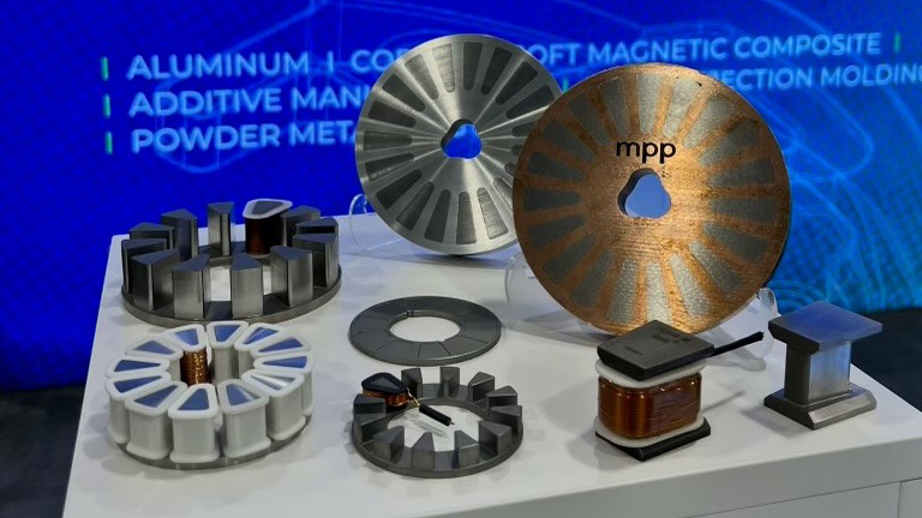
Developed during the 1990s to meet demand for alternative magnetic materials, soft magnetic composite materials have become a growing manufacturing trend. Designing and manufacturing motors with soft magnetic composite materials (SMCs) not only results in energy-efficient designs, but also cost-effective designs. Today, leading manufacturers use SMCs in a diverse range of parts, including electric motors, ventilation motors, on-board chargers, and more.
Electric Motor Topologies and SMCs
The advantages and disadvantages of electric motor topologies (axial flux, radial flux, and transverse flux) cause great debate among designers, but SMCs should be a major part of the conversation. Why? Because SMCs can be fashioned into complex shapes with powder metallurgy. When traditional components undergo various processes such as lamination, they can lose some of their magnetic properties. That’s not the case with SMCs. Designing and manufacturing with SMCs means that you can reduce core losses.
Range of Output
Soft magnetic composites offer manufacturers a dynamic range of output: 150K motor to 1MW motor. At the same time, they can reduce energy losses for more efficient operation.
Better Performance
SMCs drive electric vehicle producers to build better motors. In short, electric motors with SMCs perform better and are able to meet the highest efficiency markers, but they require less energy to do it thus saving battery life.
Reduce Need for Rare Earth Materials
Not only are the rare earth materials used to create electric vehicles and motors pricey; they’re also becoming more difficult to procure. Forward-thinking designers and manufacturers have begun to incorporate SMCs into their manufacturing processes and parts because, in addition to the other advantages they offer, they’re easier to acquire.
Using non-rare earth materials like SMCs allows manufacturers to create sleeker motors like axial flux or radial flux without sacrificing performance. As more of these motors are produced, the need for rare earth materials is reduced.
Meet Environmental Standards
Now and in the future, vehicle designers will struggle to meet environmental standards while developing high-performance motors for a competitive cost. SMCs reduce some of the challenges associated with processes and finished components. There are numerous applications that motor designers and manufacturers can count on by switching to SMCs. Improved energy efficiency is just one crucial advantage. Other benefits of SMCs include:
- Need for fewer components
- Smooth surfaces (friction reduction)
- Compact geometry
- Easier production of components
- Shorter flux path
- Intelligent controllability
- Improved longevity
- Lower production costs
- 3D design capability
- High frequency operation
MPP is committed to engineering for the future. The use of soft magnetic composites is advantageous for many reasons, but doing our part to speed the transition to these materials brings us all closer to a future with cleaner energy. We’re glad to be part of that important dynamic. Contact us to learn more about our services and how we can support your use of these innovative and cost-effective materials.
